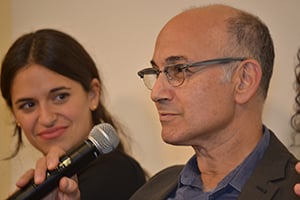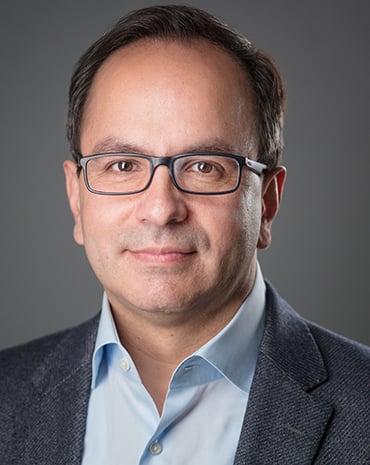Character Actor Dies After Diagnosis of 2 Rare Cancers
When Ned Eisenberg, a television character actor best known for his roles in “Law & Order: Special Victims Unit” and “The Marvelous Mrs. Maisel,” died late last month, his wife shared that he was “attacked by two very rare assassins.” The 65-year-old actor had both cholangiocarcinoma and a history of ocular melanoma.

Ned Eisenberg died at the age of 65.
“Over the course of two years, he bravely fought the cancers in private while continuing to work in show business to ensure that his medical coverage paid for himself and his family,” Patricia Dunnock, his wife, shared through a statement.
Cholangiocarcinoma is a cancer in the bile ducts, while ocular melanoma is a type of cancer that develops in the eye cells that produce pigment. Both are extremely rare and likely unrelated to each other in this case, according to Dr. Jonathan Zager, chief academic officer, director of regional therapies and senior member in the Cutaneous Oncology Program at Moffitt Cancer Center.

“It is extremely bad luck and extremely rare to have these two very rare cancers,” Zager said. “Sometimes ocular melanoma metastasizes to the liver and causes liver failure, but that doesn’t seem to be the case here.”
Zager said the more common melanoma, which typically appears on the skin, spreads through the lymphatic system. Ocular melanoma, however, spreads through the blood vessels and has a predilection for the liver. It’s still unclear what causes ocular melanoma, but Moffitt is at the forefront of treating it.
In late 2021, Zager presented results of phase 3 of the FOCUS trial by Delcath Systems of which he is lead international principal investigator evaluating the use of percutaneous hepatic perfusion (PHP) for ocular melanoma patients with liver metastasis.
“Those results are extremely positive, and the next step is submission to the Food and Drug Administration for approval,” said Zager, who expects the FDA will consider the findings this year. “Meanwhile, there is expanded access protocol open at Moffitt to allow the treatment of ocular melanoma with PHP while the FDA looks at all the data.”
Unlike traditional chemotherapy that circulates throughout the entire body, PHP uses a series of catheters and balloons to isolate the liver from the body’s circulatory system allowing for high dose chemotherapy to be delivered directly to that organ. The blood is collected as it exits the liver and filtered outside the body via bypass to remove any remaining chemo. Patients receive PHP six times, six to eight weeks apart.
“Interestingly, one of the treatments that is being explored for intrahepatic cholangiocarcinoma is percutaneous hepatic perfusion,” Zager said. “So, it all comes back around to PHP.”
According to Dr. Daniel Anaya, surgical oncologist and section head of the Hepatobiliary Program at Moffitt, the hepatobiliary team at Moffitt is a high-volume center, evaluating and treating a high number of patients with cholangiocarcinoma and other liver cancers, on a weekly basis. Based on this high volume, the expertise by all members and availability of all treatment strategies, Moffitt’s hepatobiliary team is a leader in the management of patients with these tumors in the Southeast and nationally.
Treatments for cholangiocarcinoma vary depending on its stage, Anaya said. Surgery is the best option for a potential cure. When surgery is not feasible, percutaneous approaches through the skin with the assistance of radiology imaging is an option including PHP.

“In general, there are three different types of cholangiocarcinoma based on their anatomic location – intrahepatic, hilar and distal bile duct,” Anaya said. “We now know these three cancer types are all very different, not only from the anatomic locations where they form, but also in relation to risk factors, causes, molecular signatures and treatment approaches.”
Anaya said the most common form of cholangiocarcinoma, hilar cholangiocarcinoma, is more common in patients with biliary duct abnormalities. Intrahepatic cholangiocarcinoma, which is increasing in incidence, occurs within the actual liver and is usually present in patients with baseline liver abnormalities like cirrhosis, chronic viral infections and advance stages of fatty liver disease.
“Unfortunately, due to lack of screening, many patients present with advanced cancer at initial diagnosis,” Anaya said. “For patients with metastasis, different types of chemotherapy are available. In the last few years, new and more novel types of chemotherapy agents have been developed, which are targeted to the specific cancer cells. Immunotherapy is also showing promise with improved results of treatment overall.”



